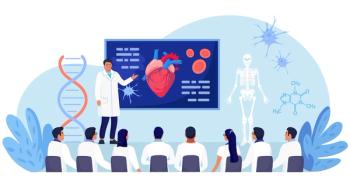
Volunteering: The benefits and risks for physicians
Using your medical skills to help out in the community can be rewarding, but physicians must make sure they consider the liability implications before lending a hand.
Many physicians enjoy giving back to their communities by lending their medical expertise through volunteering. While the benefits of giving back are clear, keep in mind that there are risks as well.
From a legal perspective, physicians need to protect themselves while volunteering in their communities or for society at large, whether it be with a local sports team or free clinic, or with larger national or international disaster or medical relief groups.
“Volunteers can’t assume insurance at their workplace will cover outside activities. It likely would not unless arrangements are made,” says Lisa Carron Shmerling, JD, MPH, executive director of
Related:
What about laws already in effect? Although the Volunteer Protection Act provides a national minimum standard for immunity, the law varies in each state. As for “Good Samaritan” laws, they are designed to apply in situations of immediate danger-such as when a physician helps someone experiencing a heart attack on a hiking trail-and usually are not intended to cover ongoing volunteering, Shmerling says.
Lawsuits uncommon
Lawsuits against physicians volunteering at sporting and other community events are uncommon but possible, says David S. Ross, MD, an associate professor at
Physicians performing routine and urgent care in these types of “makeshift” environments often have minimal medical equipment and supplies on hand, and this could affect outcomes. Lack of access to participants’ and spectators’ medical histories may play a role as well, says Ross.
Traveling to provide medical support at events also poses challenges. Different laws apply in different states. “When you go and you donate your time, you have to make sure that you’re licensed in a particular state if you’re practicing medicine,” Ross says.
A few states allow physicians traveling with their teams to maintain coverage during activities involving their own athletes. Some states permit physicians to act as consultants to doctors in the state where an event is occurring, while other states prohibit it, he says.
“There are certain laws that apply, and we just need to be aware of them,” says Ross, whose contract covers his oversight of athletes at two small colleges and a minor league hockey team affiliated with the Pittsburgh Penguins.
Liability protection important
Protection from liability is an important consideration. “Your malpractice insurance carrier may afford you that opportunity when you’re practicing at these events,” Ross says. But many carriers do not, “so we need to look into that to make sure we have some sort of liability coverage.”
In some cases, the organization contracting for physicians’ volunteer services do provide liability coverage. The
A Tennessee law stipulates that a volunteer physician can’t be sued for performing services through a social service organization. Nevertheless, the center provides liability insurance through moonlighting policies when retired physicians render services in its office, says Morris-himself a family practitioner in addition to being a United Methodist minister-even though the issue has never come up.
Related:
The 62 retired physician volunteers represent a range of specialties and are available as needed to treat patients in the Church Health Center’s office. In addition, they may request that former colleagues, who are still in practice perform surgery on these patients when required. Arrangements with local hospitals and diagnostic facilities make it possible to carry out procedures.
“We are engaged in all of the different variations of the social determinants of health,” Morris says. “What we have done over time is take away all the obstacles,” he adds. “The only thing I’m asking of the doctor is: donate your time.”
Volunteering challenges
One of the challenges of volunteering is how to follow a patient’s health from one visit to the next. This makes it difficult for a physician to have a lasting impact on individual patients, says David Singer, MD, a retired primary care physician and diabetes specialist and chair of the
“Most medical problems are longitudinal,” he says. “You don’t solve people’s diabetes or hypertension in one visit.”
In Massachusetts, about 26 clinical programs operate entirely with volunteer physicians, filling gaps in care and providing a safety net for patients who otherwise wouldn’t have access to medical services. The medical society covers the malpractice insurance of its volunteers.
Physicians commit to at least one four-hour session monthly or twice per month on average, Singer says. They see patients anywhere from church basements to mobile vans.
“Despite taking care of the needs of whoever walks in,” Singer says, “our next most important function is to set them up with one of the standard community health programs around the state, so that they’re getting healthcare in a much more appropriate way.”
The medical society also tracks mission trips that use physician volunteers in other countries. It links potential participants with dozens of options for serving abroad, says Singer, who has donated his services in Belize, Thailand, and twice in Honduras.
Serving abroad...
Many groups, including
“It is very satisfying for healthcare providers, who may be away from direct patient care (retired), to maintain that one-on-one assistance that brought them to the healthcare profession in the first place,” she says. “It is also an excellent way to give back to the community, especially when communities are in need.”
Disaster responders receive travel, lodging, and a per-diem allowance for meals and incidental costs. The volunteers are covered by the organization in the rare event of a legal action. Deployments last two to three weeks, but many American Red Cross opportunities are available near volunteers’ home areas and do not require travel or a long commitment, Casey-Lockyer says.
Related:
Nonetheless, she emphasizes the importance of considering your ability and your family’s capacity to cope with the stress of deployment and return.
...And closer to home
Assisting classroom teachers is another way for physicians to have an impact while doing what they love. Gary Temple, MD, began imparting his knowledge to sixth- and seventh-grade students after retirement in 2011 from the
The science teachers often ask for Temple’s input on educational handouts and laboratory exercises and demonstrations. Occasionally, he gives five- to seven-minute talks that expand on a topic relevant to the lesson. Topics have ranged from genetics to new technology and vaccines, while lab exercises have enabled students to follow the embryonic development of a live chick.
When the Ebola epidemic struck in West Africa, “a lot of kids had questions. They were concerned about it,” says Temple, who briefly lectured about the epidemic and answered a multitude of questions about the virus from more than 250 students that school day. After returning from a trip to the Galapagos Islands a few years ago, he used his photographs to illustrate ongoing sixth-grade lessons in geology and Darwinian evolution.
“My reward is mostly the interaction with the students and the teachers,” Temple says, “and to be able to share my excitement about science and medicine.”
Volunterring in an emergency: Is there a doctor in the house?
By Lee J. Johnson, JD
Suppose you go to the theater and one of the performers collapses on stage. The lights go on, and the theater manager steps up to the microphone to issue those terrifying words: “Is there a doctor in the house?”
Do you have to volunteer? What liability risks are involved with aiding in such an emergency?
You do not have to volunteer
Many people think Good Samaritan laws mandate that physicians volunteer to render aid in an emergency. They believe doctors have a “duty to rescue,” but no such duty exists. In general, states encourage aid by limiting liability instead of mandating it.
Declining to volunteer is not a crime. There is no civil liability for not volunteering.
You are not immune from liability
Doctors are not immune from liability when acting as Good Samaritans. State laws encourage Good Samaritan actions by limiting physicians’ liability, but protections aren’t always ironclad.
The usual standard of care in a malpractice lawsuit is what a “reasonable” practitioner in the same specialty would have done in similar circumstances at the time of the event in question. Negligence occurs only if a doctor falls short of what a “reasonable” practitioner with the same specialty would have done in similar circumstances.
An example is initiating first aid but then walking away from the scene before emergency medical services arrive. Once you begin to render aid, it is advisable to stay at the scene of the accident unless you need to call for help, or if someone who has equal or greater expertise arrives and takes over. You cannot be expected to endanger yourself (by staying in a car that is about to be engulfed in flames, for example).
It must be a true emergency
In general, to qualify for Good Samaritan protection, you must meet three qualifications: there must be a true emergency, aid must be rendered outside a hospital or a place with medical equipment, and care must be voluntary.
What about informed consent?
Informed consent laws in all states mandate that, before rendering treatment that carries a material risk, the physician must explain to the patient the risks, benefits, and alternatives of the proposed treatment. And the patient must signify that he or she understands and give approval for the treatment. The trouble is that informed consent often is not possible in an emergency.
The bottom line is you aren’t required to secure a patient’s consent if any delay in treatment would jeopardize the patient.
Check with your local medical society or malpractice carrier on the law in your state. Document the emergency in the patient’s records as soon as possible. Use language that reflects the language of your state’s laws as closely as possible.
Know your malpractice insurance coverage
Most insurance policies cover medical malpractice liability in Good Samaritan situations. Judgments and defense costs would be covered by a physician’s professional liability insurance. Employed doctors might want to be more circumspect, however, because employees are insured primarily for acts within the scope of their employment.
Newsletter
Stay informed and empowered with Medical Economics enewsletter, delivering expert insights, financial strategies, practice management tips and technology trends — tailored for today’s physicians.















